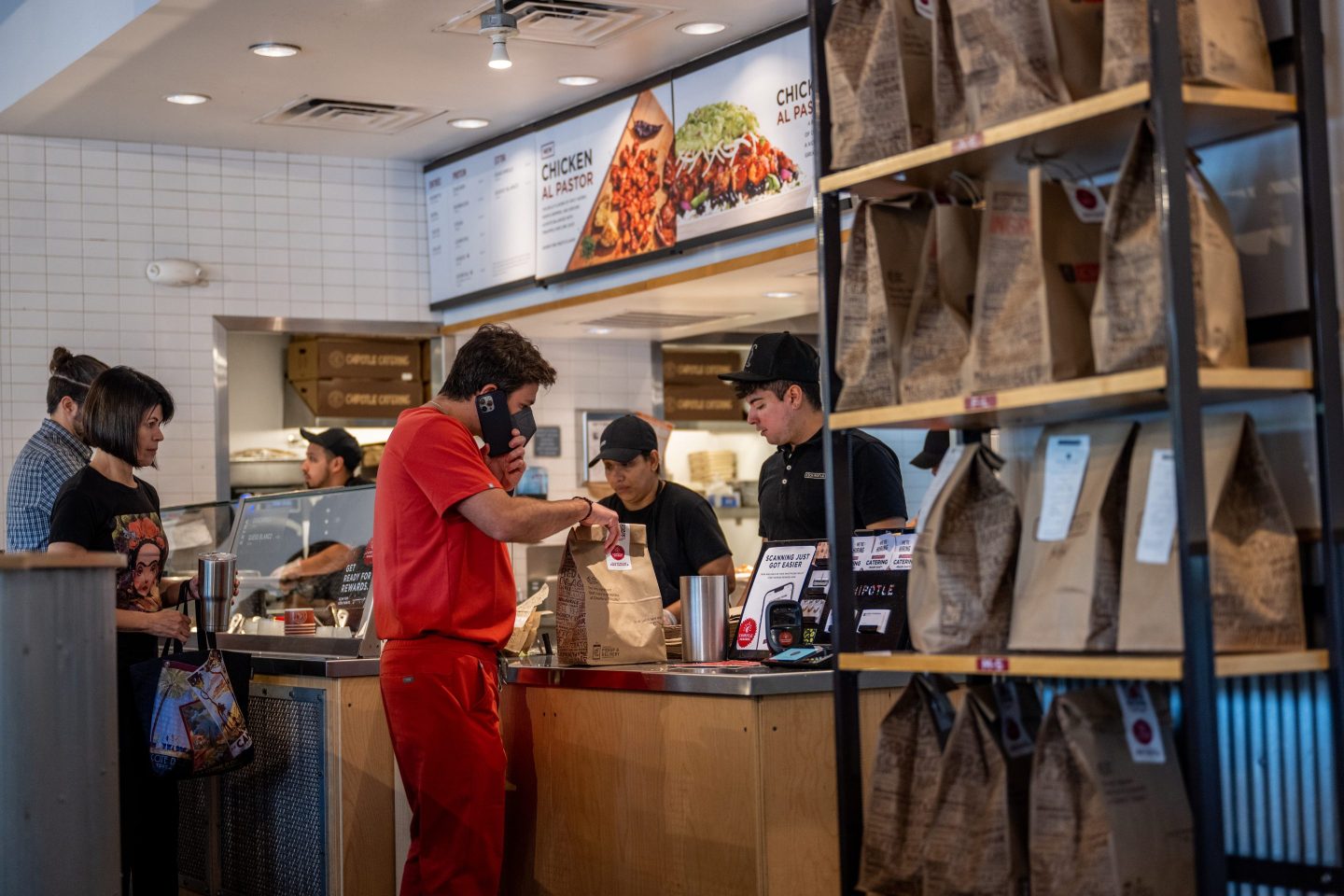Chipotle was not the first fast-food restaurant to get into the mobile app game. Just 10 years ago, if you wanted to place an order for pickup, you had to fax an order form to the restaurant.
“The good news about being behind is you can take a look at what others are doing and try to harvest the best ideas,” Curt Garner, president, chief strategy and technology officer at Chipotle, told Fortune.
Today, digital sales are a significant contributor to the chain’s business, and the Chipotle mobile app is central to that success—providing a convenient entry point for customers, as well as an important analytical tool that helps the company strengthen its relationship with customers. In the first quarter of 2025, digital sales brought in 35.4% of Chipotle’s total food and beverage revenue, a jump up from 2019’s 19.6%. And there are more than 20 million active Chipotle Rewards members, who earn points for their purchases in-app and in-store.
From McDonald’s and Taco Bell to Starbucks and Dunkin’, mobile apps, which leverage the power of the cloud, have become a standard menu item for businesses in the retail food and beverage industry. “Now the app is part of the DNA of a restaurant concept, and it’s not just an add-on,” said Stephen Zagor, a consultant in the restaurant and food business space and an adjunct professor at NYU and Columbia Business School. “It’s part of the inside of how a restaurant works.”
One place that Chipotle, a Mexican-inspired fast-casual restaurant, looked to when developing its mobile app was Uber, a platform that was convenient on all fronts—both for riders and for drivers. To that end, Garner made a point of ensuring that the app made it “really easy to be a crew member in the restaurants.” This meant developing digital kitchens to fulfill digital orders; orders placed in the restaurant are prepared by a separate makeline.
The restaurant chain also invested early in infrastructure that would support digital demand, so as to avoid getting overwhelmed by orders—a problem that has challenged some businesses with apps.
Starbucks, where Garner was previously CIO, has been swamped with mobile orders, resulting in overwhelmed baristas and impatient customers. In February, the company limited how many items customers can order online to help remedy the situation. Brian Niccol, CEO of Starbucks and former CEO of Chipotle, said in an interview, “I want to see mobile order not be a problem.”
Garner says that giving retail staff visibility into digital order queues and “rate limiting” can help manage some of the challenges with mobile apps. Chipotle developed a proprietary logistics package, dubbed Smarter Pickup Times, which provides information on things like incoming orders and how busy the restaurant is at particular times. Chipotle also has visualization screen technology in its restaurants, showing employees the digital queue of orders or the ingredients needed to prepare a meal.
Another ever-present focus in the restaurant mobile app space is personalization, utilizing AI engines to create the most seamless ordering experience for customers. One way Chipotle is deploying AI is through its chatbot, Pepper, which answers guests’ questions in real time. “People that are on digital platforms don’t necessarily want to pick up the phone and call somebody if they have a question or a concern,” Garner said. “So let’s give them the channel that they’re comfortable with and that they’re looking for.”
Chipotle also uses AI to cater the app experience to the individual customer. “When we launch a new product, like Chipotle honey chicken, we want everybody to know there’s a new product, and we’ll put that on our home screen, but we’re letting the AI engine learn and determine by each guest what would be appropriate for that.” The more a customer engages with the app, the more personalized their experience will be.
Collecting data on mobile app users is key here. “It’s really difficult to overstate the importance of the information that companies are getting about their customers through things like these apps,” said Forrest Morgeson, director of research at the American Customer Satisfaction Index.
“We are relentless around conversion,” Garner said, explaining that Chipotle pays close attention to customers’ journeys across its different digital properties. For customers that Chipotle knows care about their rewards points: “We should show you that as soon as you come on the property that ‘Hey, you hit a milestone, and you can get your entree for free.’”
This data collection and utilization works for both the business and the customer. “It makes the restaurant business, which is inherently unprofessional in most cases, much more professional,” said Zagor. “[T]he app is the entry point for the guests to get into that equation.”
